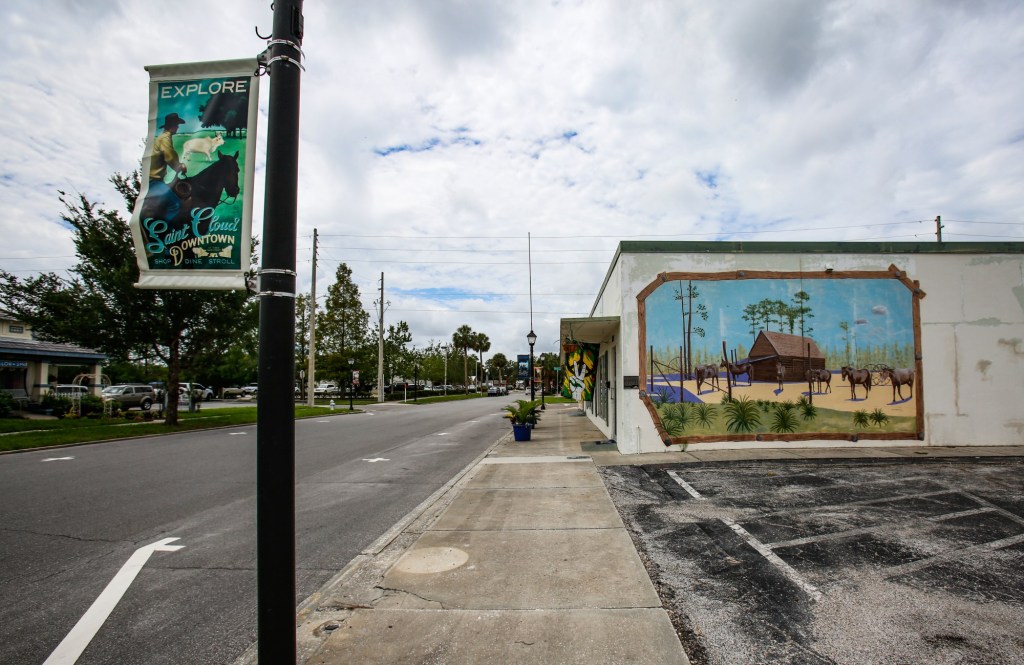
A year after St. Cloud adopted strict new architectural standards, the City Council is considering another ordinance requiring developers to install public art in their new subdivisions or pay into a public art fund.
Slated for a final public hearing and vote on April 25, it states that developers of non-residential commercial projects and residential subdivisions must pay 1% of the total development costs for public art in their project or on city property, or to pay that amount into the city’s public art fund before they can start construction.
The contribution is capped at $500,000 for commercial projects and $1 million for residential projects, according to a report in GrowthSpotter.
Community Development Director Melissa Dunklin said the ordinance was drafted at the direction of the City Council, who wanted the existing ordinance expanded beyond just the central business district.
Public art fees or requirements are fairly common for commercial projects, especially in urban areas. What is less common is for cities to apply the standards citywide, particularly to new residential neighborhoods.
“We’re really hoping that this ordinance will encourage the developers to enhance the communities and add to the unique character of the neighborhoods within St. Cloud,” Dunklin said.
And it also applies to new multifamily projects. So any new apartment development in the city with a development cost over $50 million would be required to install $500,000 of public art on the exterior of its building, or donate artwork to be displayed on public property, or pay into the public art fund. There is no exception for affordable housing.
The same is true for new residential subdivisions, only in this case, the artwork would have to be approved when the developer applies for a preliminary subdivision plan approval. And since the 1% is based on the total land and home construction costs, new subdivisions with more than a few hundred homes would likely have to pay the fee or invest $1 million in public art before breaking ground.
Dunklin said developers have lots of options for how to meet the requirements, such as spending more on decorative hardscape, such as park benches, bike racks and shade structures.
Fountains, bus shelters, gateway entrances are all eligible projects, according to the ordinance. But they must be designed by an artist specifically for that community and not available elsewhere, and the functionality of the item is secondary to the aesthetic or decorative impact.
City staff said they have no idea how much revenue would be collected annually. Based on development trends in the city, it could be in the millions.
“So that would be only dependent upon whether or not the developers choose to pay [the fee],” Dunklin said. “… What is actually allowed to qualify as art is so broad, and it gives the developers so many opportunities to count things like functional elements, we’re hoping that encourages the developers to actually provide the art rather than pay the fee.”
Lee Steinhauer, government liaison for the Greater Orlando Builders Association and the Apartment Association of Greater Orlando, said the ordinance basically creates a new impact fee, only without the clarity or oversight of how the money will be spent.
“It’s basically a slush fund,” he said.
Developer Kal Hussein said he thinks the result will be a net positive for the community and the builders.
“One percent is absorbable,” he said. “You won’t end up with these cookie-cutter subdivisions, and in the long run you’ll probably be able to recoup that investment because you can sell the homes for the higher price.”
Have a tip about Central Florida development? Contact me at lkinsler@GrowthSpotter.com or (407) 420-6261. Follow GrowthSpotter on Facebook and LinkedIn.
This post was originally published on this site be sure to check out more of their content







